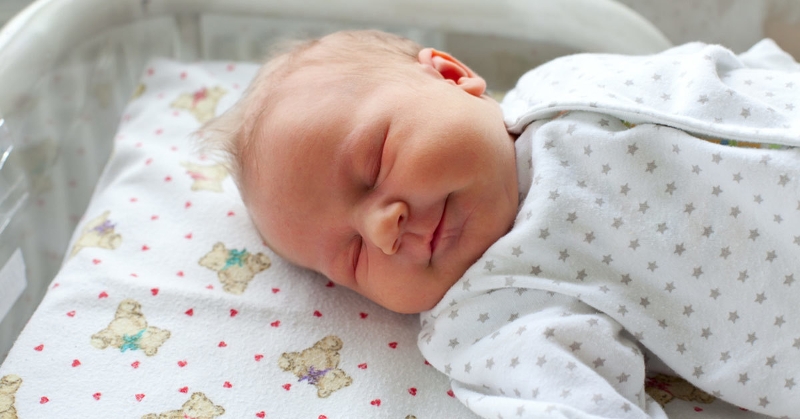Bonding with your children and loved ones is not only a deeply satisfying thing to do — it’s an important part of human interaction. It allows us to establish secure attachments styles and results in a number of physical and health benefits. However, did you know that these positive changes can occur at a biological level? Let me introduce you to our body’s love molecule, oxytocin.
What is Oxytocin?
Oxytocin is a hormone that was first discovered in 1906, by Sir Henry Dale, who coined the term “oxytocin” derived from the Greek “ωκυτοκίνη” (pronounced as okitokini), meaning “swift birth” (1). True to its name, this hormone is released in large amounts during childbirth and is what allows the uterus to contract during birth and milk to eject when breastfeeding (2).
The release of oxytocin in the body regulates a number of important social behaviors such as our ability to bond with our loved ones, interact with others and to explore our environment— all of which are important for reproduction and caring for our children. The release of this molecule allows mothers to have healthy bonds with their children because from an evolutionary sense, taking care of our progeny is what allowed our species to survive. Because of its strong role in reproductive and maternal behaviors, oxytocin is also known as the “love molecule”.
In essence, the release of this molecule allows mothers to have healthy bonds with their children because from an evolutionary sense, taking care of our progeny is what allowed our species to survive. Because of its strong role in reproductive and maternal behaviors, oxytocin is also known as the “love molecule”.
The Biology of Love
Love and social bonding are important for our survival not only because they help enrich our human experiences, but because they help facilitate reproduction and can enhance brain development by reducing anxiety and stress (3). From an evolutionary perspective, group exclusion (aka leaving someone or a group of people out of a social situation) results in physical and developmental disorders — increasing the likelihood of death in both animal models and primitive human tribes (4).
This means that we are meant to be social animals and that social isolation is a concept that is not very well programmed in us. Oxytocin levels are also positively correlated with trust, a behavior that is necessary for developing emotional relationships, social bonding, and thus group inclusion (5).
The Mother-Infant Bond
During Pregnancy
In mother-infant bonding, healthy bonding releases oxytocin, which influences positive brain development and social behaviors. Actions such as breastfeeding, skin-to-skin contact like hugging, and mother’s milk can induce the release of oxytocin in both the mother and child, simultaneously increasing bonding between the two (6).
Abnormal bonding, such as a lack of hugging, may negatively affect the child’s confidence and ability to establish relationships with other people, social factors that are heavily influenced by the body’s oxytocin levels. For example, stressful events during the gestational period may be related to behavioral deficits in later adulthood because of how it affects our oxytocin systems. Studies in rats have demonstrated that when prenatally stressed mothers and offspring were paired, an increase in anxiety-like behavior and aggressiveness was observed, which was associated with lower oxytocin levels in the brain (7).
After the child is born
Postnatally, positive social experiences and maternal bonding in early life is the basis for healthy social and emotional development and is associated with heightened resilience during stress (8). Oxytocin levels in both mothers and fathers of 4-6-month-old children were correlated with the child’s level of social engagement and bonding with their parents (9) and higher oxytocin levels in mothers are associated with increased mother-infant bonding (10).
This means that bonding with one’s child, for example, through hugging, can increase oxytocin in the body, which not only establishes a healthier relationship between the parent and child, but may also reduce stress, and social deficits as the child grows up.
So, the next time you hug your kids, spouse or any loved one for that matter, not only are you showing them your affection, but you’re biologically increasing their oxytocin levels, improving their mental well being!
Sources
- Dale, H. H. (1906). On some physiological actions of ergot. The Journal of Physiology, 34(3),
163–206. Retrieved from https://www.ncbi.nlm.nih.gov/pubmed/16992821 - Magon, N., & Kalra, S. (2011). The orgasmic history of oxytocin: Love, lust, and labor. Indian
Journal of Endocrinology and Metabolism, 15 Suppl 3(Suppl3), S156-61. - Neumann ID. The advantage of social living: brain neuropeptides mediate the beneficial consequences of sex and motherhood. Front Neuroendocrinol [Internet]. 2009 Oct [cited 2016 Sep 7];30(4):483–96. Available from: https://www.ncbi.nlm.nih.gov/pubmed/19416734
- Reidpath DD, Chan KY, Gifford SM, Allotey P. “He hath the French pox”: stigma, social value and social exclusion. Sociol Health Illn [Internet]. 2005 May [cited 2016 Sep 7];27(4):468–89. Available from: https://www.ncbi.nlm.nih.gov/pubmed/15998347
- Kosfeld M, Heinrichs M, Zak PJ, Fischbacher U, Fehr E. Oxytocin increases trust in humans. Nature [Internet]. 2005 Jun 2 [cited 2016 Aug 15];435(7042):673–6. Available from: https://www.ncbi.nlm.nih.gov/pubmed/15931222
- Moberg KU, Prime DK. Oxytocin effects in mothers and infants during breastfeeding. Infant. 2013;9:201–6.
- DeSousa NJ, Bush DE, Vaccarino FJ. Self-administration of intravenous amphetamine is predicted by individual differences in sucrose feeding in rats. Psychopharmacology (Berl) [Internet]. 2000 Jan [cited 2016 Aug 18];148(1):52–8. Available from: https://www.ncbi.nlm.nih.gov/pubmed/10663417
- Tops M, Koole SL, IJzerman H, Buisman-Pijlman FTA. Why social attachment and oxytocin protect against addiction and stress: Insights from the dynamics between ventral and dorsal corticostriatal systems. Pharmacol Biochem Behav [Internet]. 2014 Apr [cited 2017 Jan 5];119:39–48. Available from: https://www.ncbi.nlm.nih.gov/pubmed/23916423
- Feldman R, Gordon I, Zagoory-Sharon O. Maternal and paternal plasma, salivary, and urinary oxytocin and parent-infant synchrony: considering stress and affiliation components of human bonding. Dev Sci [Internet]. 2011 Jul [cited 2017 Jan 3];14(4):752–61. Available from: https://www.ncbi.nlm.nih.gov/pubmed/21676095
- Numan M, Young LJ. Neural mechanisms of mother–infant bonding and pair bonding: Similarities, differences, and broader implications. Horm Behav. 2016;77:98–112.

